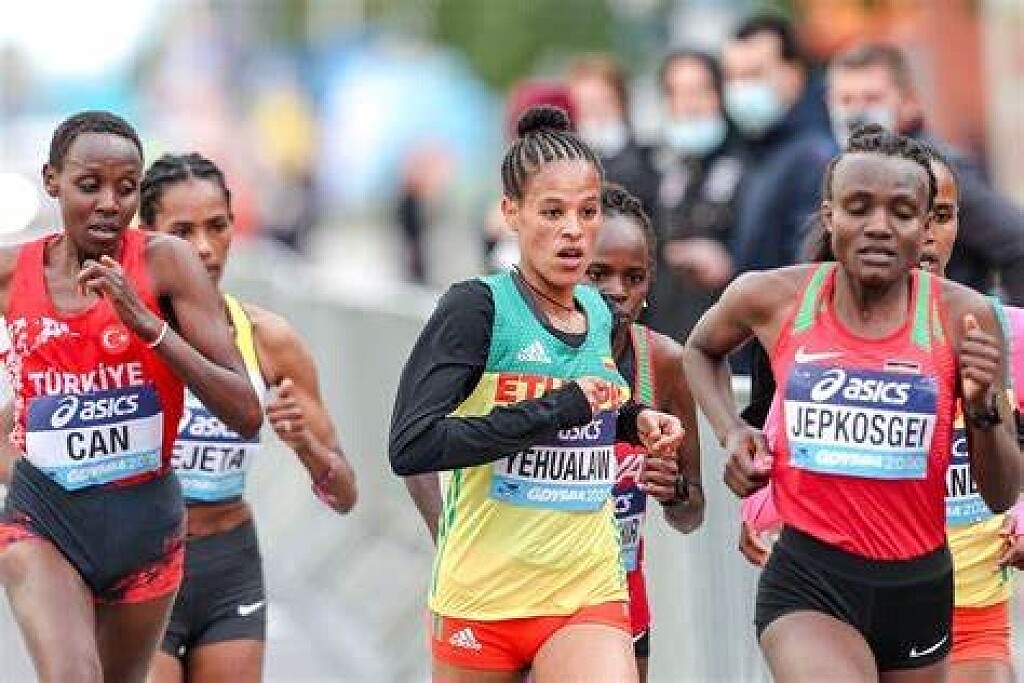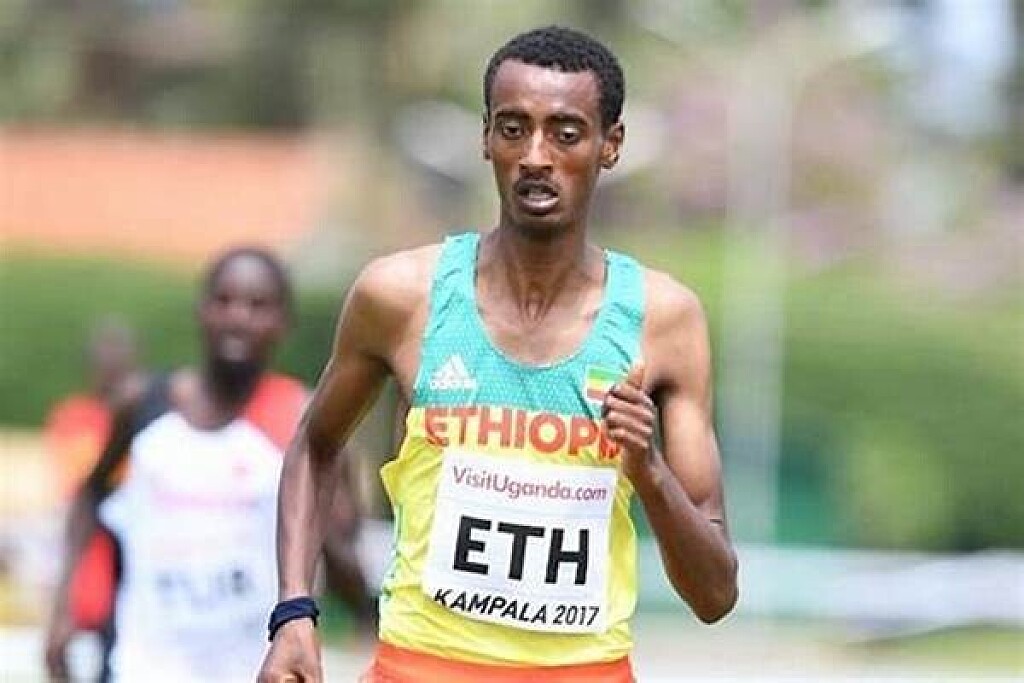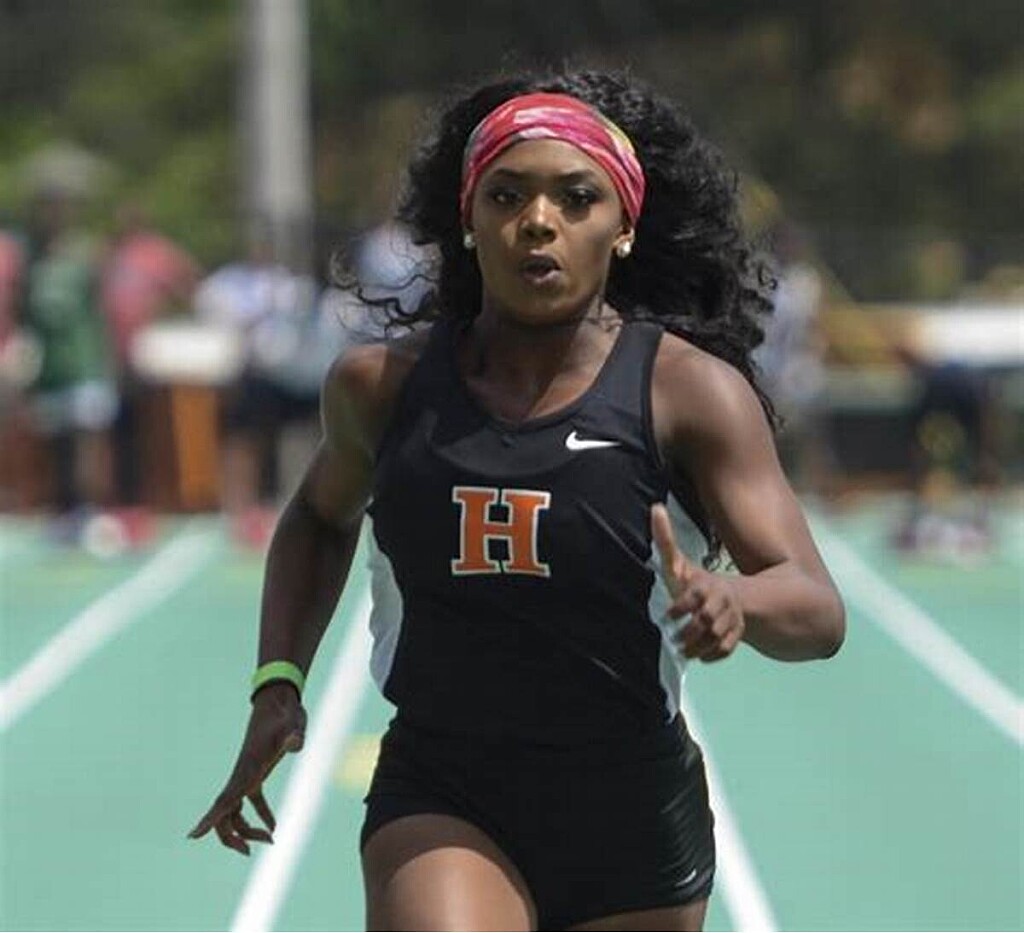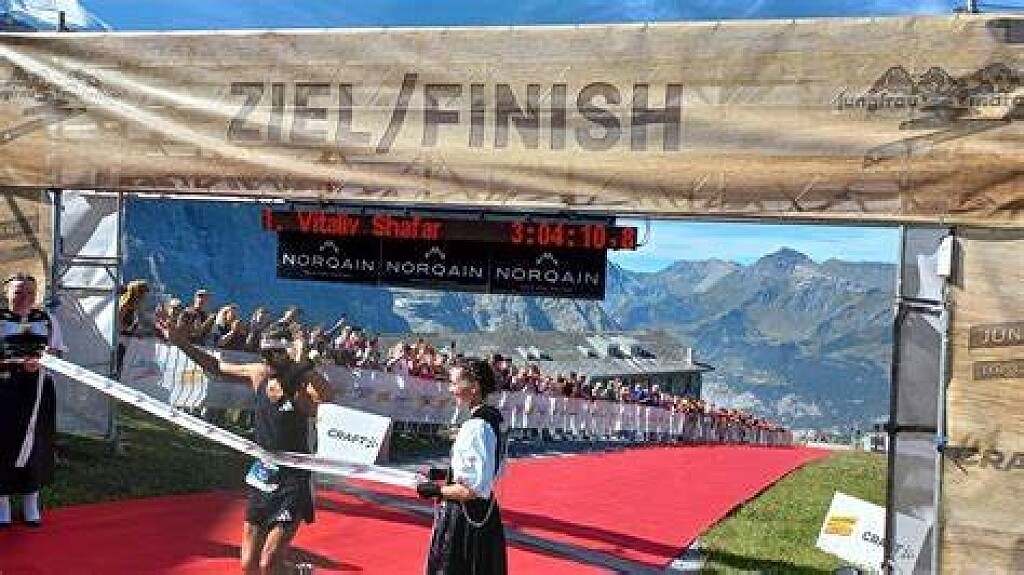Running News Daily
Top Ten Stories of the Week
9/14/2024
These are the top ten stories based on views over the last week.
McColgan is set for Great North Run victory
Eilish McColgan bids to win the Great North Run half-marathon for the first time when she lines up alongside 60,000 other runners on Sunday.
The Scot returned from injury to compete for Great Britain at the Paris Olympics, finishing 15th in the 10,000m.
She enters this weekend's race in much better condition having won the Big Half marathon in London last weekend in 69 minutes and 14 seconds.
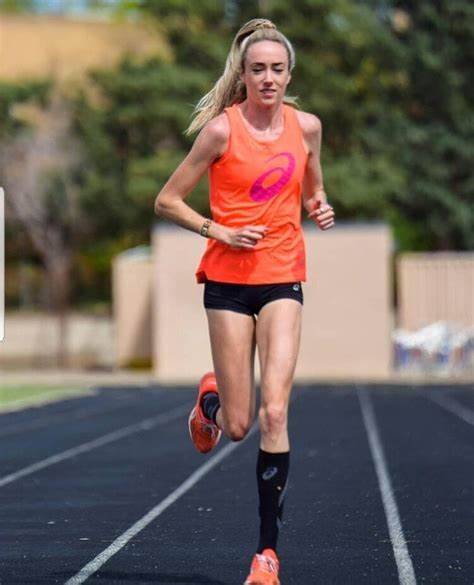
The 33-year-old British record holder will come up against two-time champion Vivian Cheruiyot, of Kenya, and Ethiopia's Senbere Teferi.
While McColgan's mum Liz won the Great North Run three times, Eilish's best result is second place in 2021.

"Returning from this year's Paris Olympics and on the road back from injury, I'm especially looking forward to the tens of thousands of spectators and supporters lining the streets, as well as the 60,000 runners taking part alongside me," said McColgan.
Britain's Marc Scott, the 2021 Great North Run champion, competes in the men's race against the likes of Olympic 10,000m silver medallist Berihu Aregawi and 2021 London Marathon winner Sisay Lemma, both from Ethiopia.
Leading the field in the men's wheelchair race is 2022 Commonwealth Games champion JohnBoy Smith, while fellow Briton Jade Hall will bid to add the 2024 Great North title to her triumph in 2021.
What is the Great North Run course?
The annual 13.1-mile race starts in Newcastle city centre, crosses the River Tyne and goes through Gateshead before finishing by the sea in South Shields.
Runners raise millions of pounds for charity and you can watch comprehensive coverage on BBC One from 10:00 BST on Sunday.
(09/06/24) Views: 124AJ Bell
Eliud Kipchoge: Control the mind control the body
Marathon legend Eliud Kipchoge emphasised the importance of being “psychologically fit” during his educational visit to Manchester United.
Always eager to learn, Kenya’s world-renowned runner spent a day at Carrington to see our facilities, watch training and speak with the coaching staff. He then visited Old Trafford to attend the Reds’ Premier League match against Liverpool. The greatest marathoner of all time, Kipchoge won back-to-back gold medals at the 2016 and 2020 Olympic Games. He has also claimed victories in prestigious marathons around the world, including Berlin, Chicago, London and Tokyo.Kipchoge is best known for being the first person to run a marathon under two hours, clocking a time of 1:59:40 in 2019. His achievement wasn't recognised as a world record, as it was not run under open marathon conditions, but it signified a historic step forward in human performance.
During his visit to the Theatre of Dreams, the 39-year-old icon explained how mentality is just as important as physicality when it comes to achieving greatness. “Mindset is important for a sportsman and all the footballers,” said Eliud. “You must be physically fit but above all you must be psychologically fit.
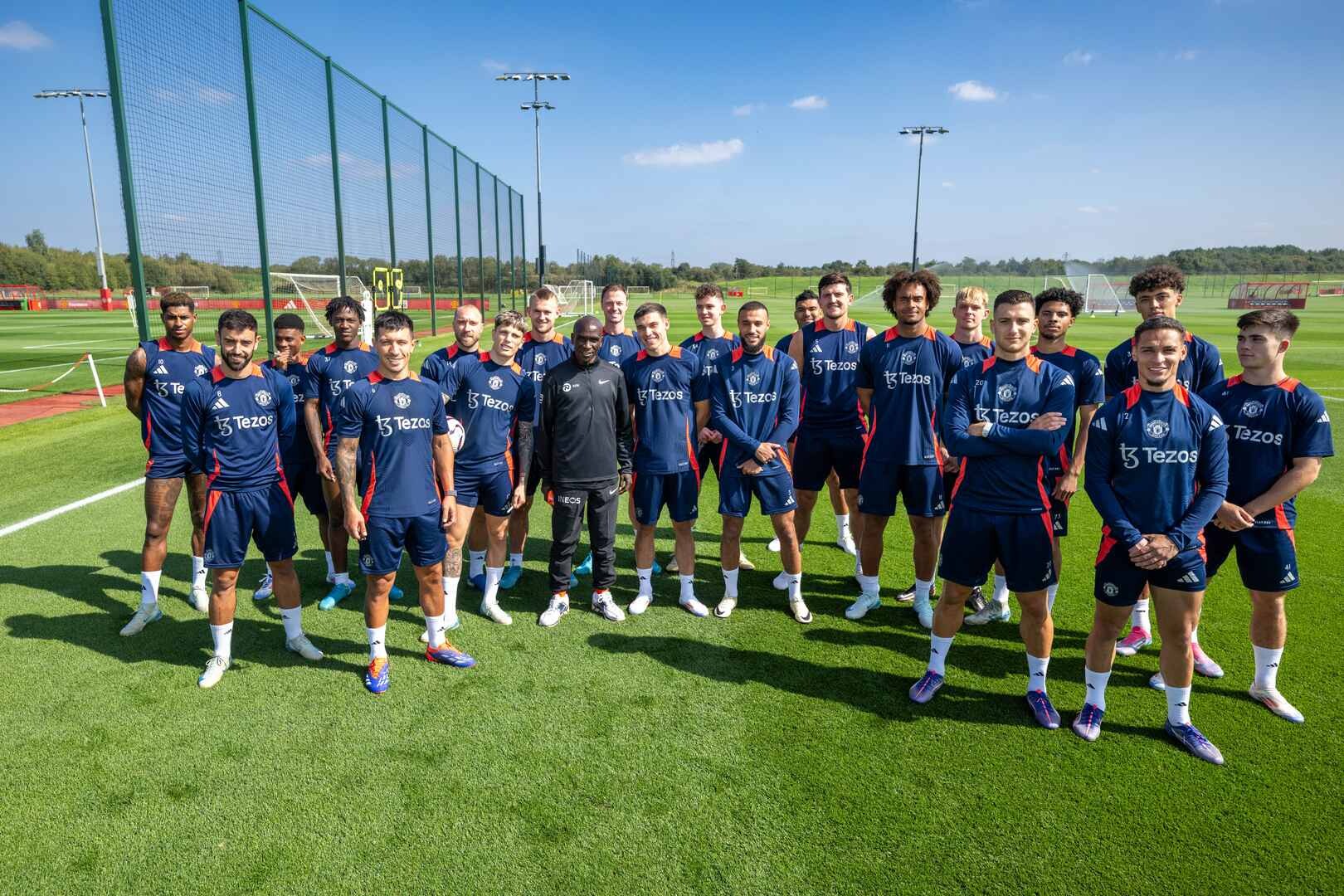
“What drives a man, what drives a woman, is the mind. If you are able to control the mind then you can control your body and you are able to consume the right things. Then out of that will come good things.
“In training you must have a strong and a high-profile mind. Playing the game, you need the right mind. The right way. When you are tackling your opponent, if you have the right mind then you can tackle well.
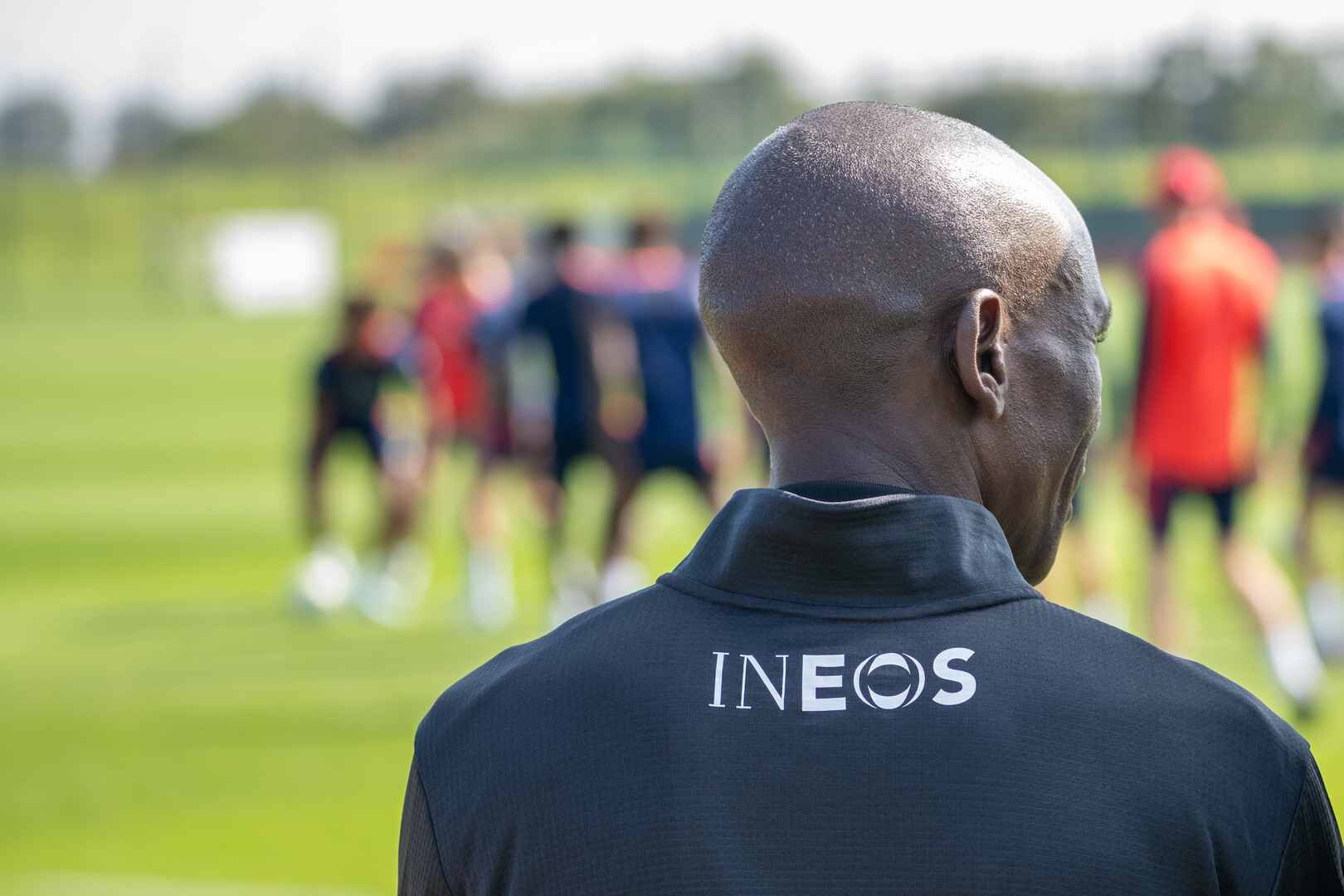
“If you are sprinting for a ball, if you have the right mind then you can sprint further than your opponent. So, the key is to be positive in life, always positive every day. “That's the beginning of good results and that's the beginning of real professionals. If all of the sportsman, or living people, can have positivity with each other then they are successful.”
Asked about other sportsmen or women being receptive to his positive message, Kipchoge admitted that interaction fuels him to continue his illustrious career. “It is lovely, it gives me more to wake up and to still press on every day. It's a big motivation for me when people are inspired by what I am doing and when people consume the positivity and try to improve their minds. That's my happiness.”
(09/06/24) Views: 101
Editorial Team
Korir and Gebreslase to lock horns at Sydney Marathon
The 2022 World Marathon silver medalist Judith Korir is set to rekindle her rivalry with the 2022 World Champion Gotytom Gebreslase of Ethiopia at the Sydney Marathon on September 15.
During their last meeting at the 2022 World Championships in Eugene, Gebreslase edged out Korir by nine seconds to claim the title in a course-record time of 2:18:11. Israel’s Lonah Chemtai was third in 2:20:18.
Race organizers have touted this year’s lineup as one of the most competitive as athletes eye glory in one of Australia’s most iconic cities.
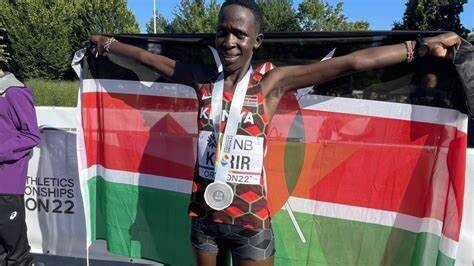
“The calibre of athletes participating this year is a testament to Sydney’s allure as a world-class marathon destination. We’re excited to witness these extraordinary competitors race through our new course, against the backdrop of our iconic city,” said Sydney Marathon race director, Wayne Larden.
Korir, 28, takes a wealth of experience and success to Sydney, having won the 2022 Paris Marathon (2:19:48), 2021 Abu Dhabi Marathon (2:22:30) and Lugano Half Marathon (1:06:25), 2019 Venice Marathon (2:29:21) and the 2020 Izmir Marathon (2:33:59).
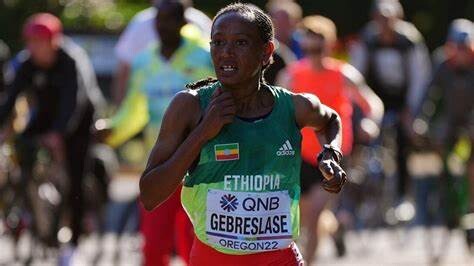
She finished sixth at last year’s London Marathon (2:20:41) and settled for fourth at the 2022 edition (2:18:43).
Gebreslase is a world marathon silver medalist from last year’s championships in Budapest, Hungary, in a time of 2:24:34, behind compatriot Amane Beriso (2:24:23) and ahead of Morocco’s Fatima Ezzahra (2:25:17).
The Ethiopian has victories from the 2021 Berlin Marathon (2:20:09) and the 2021 Bahrain Half Marathon (1:05:36).
At last year’s Ras Al Khaimah Half Marathon, she finished second in 1:05:51. She has finished third at the Hamburg Marathon (2:21:19), the 2022 Tokyo Marathon (2:18:18), 2022 New York Marathon (2:23:39) and the 2022 Liboa Half Marathon (1:07:11).
Korir will be joined by a formidable group of compatriots including Beatrice Cheptoo, the 2022 Istanbul Marathon champion, Rotterdam Marathon runner-up Viola Kibiwot and Sharon Chelimo, third place finisher at last year’s Frankfurt Marathon.
Two-time Frankfurt Marathon champion Brimin Kipkorir spearheads the Kenyan charge in the men's race.
Kipkorir bagged the 2022 Frankfurt title in 2:06:11 and defended it last year in a personal best of 2:04:53.
The 35-year-old is a two-time Nairobi Standard Chartered Marathon champion — 2017 (2:12:39) and 2019 (2:10:43).
He will be joined by Fukuoka Marathon champion Michael Mugo, 2017 Rotterdam Marathon third-place finisher Laban Korir and three-time Kosice Marathon winner Reuben Kerio.
They will face stiff competition from Ethiopia’s Leul Gebresilase, the 2022 world marathon bronze medalist, Seoul Marathon third-place finisher Haftu Teklu and last year’s Tokyo Marathon champion Deso Gelmisa.
(09/06/24) Views: 99Teddy Mulei
Ethiopia’s Yalemzerf Yehualaw top contender for New Women’s Course Record
All eyes will be on Ethiopia’s Yalemzerf Yehualaw during the TCS Amsterdam Marathon on Sunday, October 20. Her personal best of 2:17:23 is just three seconds shy of the current women’s course record (2:17:26, set by Almaz Ayana in 2022). In 2022, the former 10 km world record holder won the TCS London Marathon. Among the men, Guye Adola, Bernard Koech, Tsegaye Getachew, and Philemon Kiplimo will be battling for the top spot.
At just 25 years old, Yalemzerf Yehualaw is still at the beginning of her career. However, she has already recorded the second fastest half-marathon time ever (1:03:61, Valencia 2021) and the third fastest 10 km time ever, which was also a former world record (29:14, Castellón 2022). She won the 2022 Hamburg Marathon in one of the fastest debut times ever (2:17:23) and later that year claimed victory at the TCS London Marathon (2:17:26). Last year, the NN Running Team athlete finished fifth in London and also placed fifth at the World Championships marathon.
In Amsterdam, Yehualaw will face a strong challenge from Kenyan athlete Winfridah Moseti. Moseti has only run five marathons so far, but her progress has been remarkable. After her debut in Milan in 2021 (2:27:44), she finished fifth in Paris last year (2:23:38) and second in Frankfurt (2:20:55). This spring, she again finished second in Hamburg, setting a strong personal best of 2:18:25.
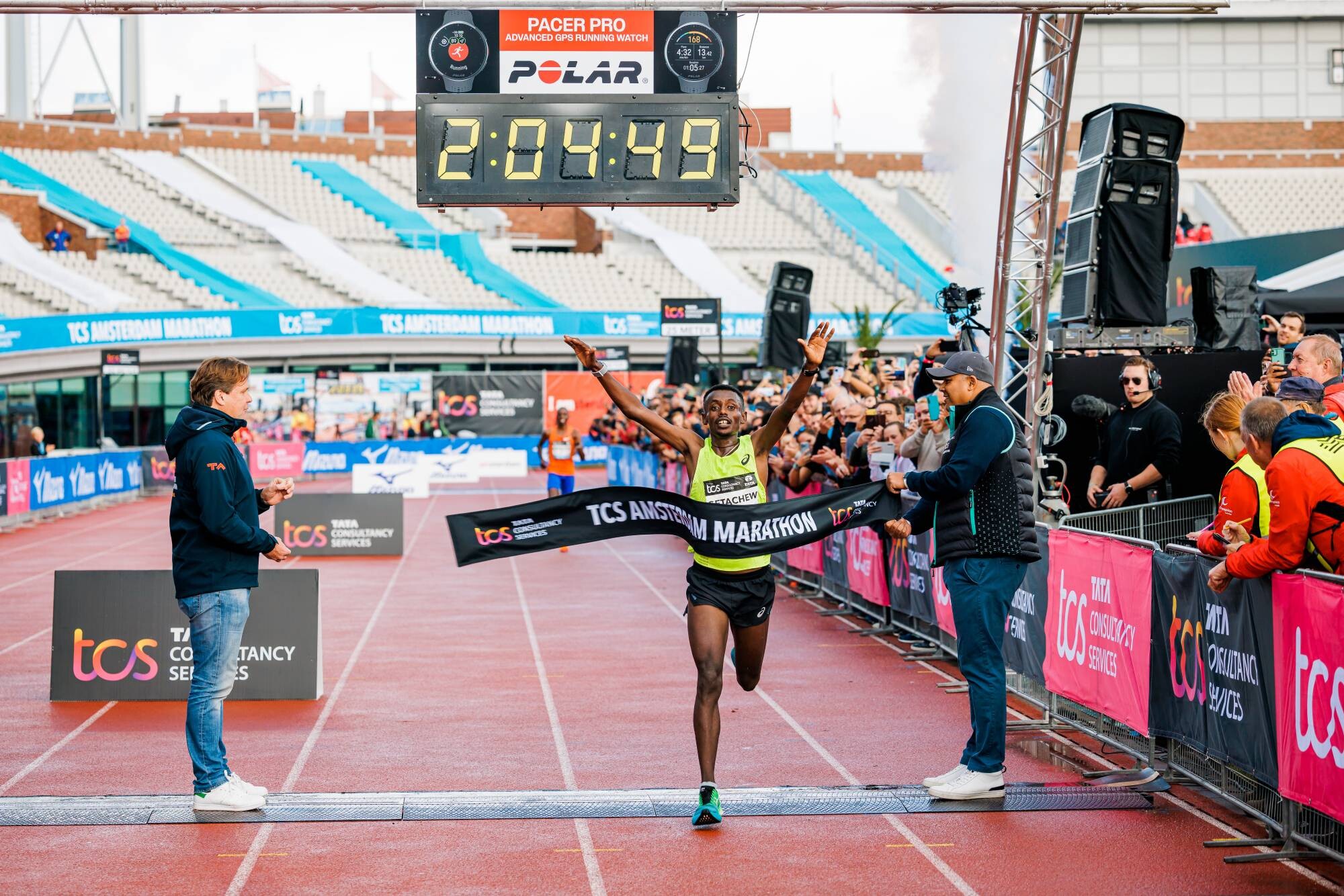
Behind these two world-class athletes, a competitive group of women will aim to break the 2:20 barrier: Selly Chepyego (PR of 2:20:03), Haven Hailu (PR of 2:20:19, set in Amsterdam), Desi Jisa (PR of 2:20:47), and Enatnesh Tirusew (PR of 2:20:48).
Tight Competition in Men’s Race

In the men’s race, the outcome is far from certain. The fastest man in the field is Ethiopian Guye Adola with a personal best of 2:03:46. However, both Koech and Getachew have previously made it to the podium in Amsterdam, and Kiplimo is also a strong contender with his impressive half-marathon personal best of 58:11, highlighting his speed.
Guye Adola’s track record is certainly impressive. He won the 2021 Berlin Marathon (2:04:45) and finished second in Berlin in 2017, where he set his personal best of 2:03:46. He has also stood on the podium in Valencia (third in 2019) and Paris (second in 2023). Adola trains in Ethiopia alongside Tamirat Tola, who holds the TCS Amsterdam Marathon course record (2:03:39, set in 2021).
Bernard Koech finished second behind Tola in that same year, with a time of 2:04:08. Koech is a two-time winner of the Hamburg Marathon, most recently this year with a time of 2:04:24, which ranks as the eighth fastest marathon time of 2024.
Tsegaye Getachew made his international breakthrough in Amsterdam, winning the race in 2022 with a time of 2:04:49. Since then, he has focused on the Abbott World Marathon Majors, with mixed success. His best results include a fifth-place finish in Tokyo in 2024 and a third-place finish in 2023. At last year’s World Championships marathon in Budapest, he finished 16th.
Philemon Kiplimo, with a half-marathon personal best of 58:11, has room for improvement over the full marathon. He set a strong personal best of 2:04:56 in Berlin last year and finished third in Hamburg this spring.
(09/09/24) Views: 99Three short and sweet fall workouts
Whether you are hanging onto summer vibes or love all things pumpkin spice, these quick workouts will have you solidifying the basics.
Whether you’re hanging on to the warm end-of-summer days or eager to enjoy all things pumpkin spice, you’ll love these short and snappy, back-to-basics workouts. These three sessions are designed to keep your training varied and engaging as the seasons change.
1.- Autumn fartlek fun

This workout blends intensity with variety, making it perfect for sharpening your speed as you head into the fall racing season. Fartlek is Swedish for “speed play,” and involves injecting your workout with varied paces that can range from a sprint to a very easy jog. The random nature of fartlek keeps it enjoyable and helps prevent burnout.
Warm up with 10 minutes of easy running.

Run at a hard pace for two minutes, followed by two minutes of easy jogging. Repeat this cycle for 15-20 minutes, depending on your fitness level. The key here is to vary the intensity—think of it as a playful way to inject some speed into your run. Choose landmarks like trees, mailboxes or light posts to signal when you’ll start or stop your harder efforts.
Cool down with 10 minutes of easy running.
2.- Crisp morning hill repeats
Hill repeats are fantastic for building strength in your legs and improving your running form. As the temperatures drop, this workout also helps keep your body warm and engaged.
Warm up with 10 minutes of easy running, followed by some drills or strides.
Find a moderately steep hill that takes about 30-60 seconds to run up. Run up the hill at a strong, steady effort, focusing on driving your knees and pumping your arms. Jog or walk back down to recover. Repeat six to eight times.
Cool down with 10 minutes of easy running.
3.- Scenic tempo session
A tempo run improves your endurance and helps you lock into a solid pace, making it ideal for those preparing for longer races or simply looking to maintain fitness.
Warm up with 10 minutes of easy running, savouring the changing scenery around you.
Run at a comfortably hard pace (a pace you could maintain for an hour) for 15-20 minutes. This should feel challenging but sustainable, keeping you in a steady rhythm.
Cool down with 10 minutes of easy running, soaking in those autumn colours, followed by some dynamic stretches.
Whether you’re aiming for a strong fall race or to maintain your fitness through the off-season, these sessions will help you stay on track while enjoying the crisp, refreshing autumn air.
(09/06/24) Views: 97Keeley Milne
Kejelcha, Barega and Mateiko set to fly the fastest in the Valencia Half Marathon
Elite athletes hope for top performances at race famous for record times.
The Valencia Half Marathon Trinidad Alfonso Zurich has confirmed the names of the international elite athletes who will fly through the streets of the “ciudad del running” on October 27.
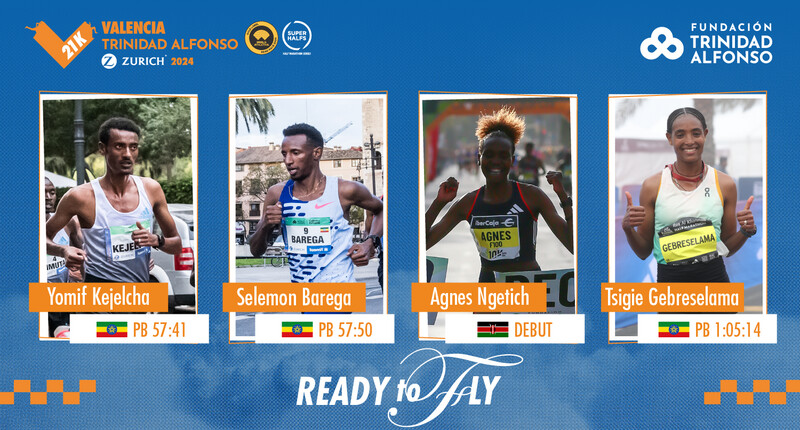
The race, organized by SD Correcaminos and Valencia City Council, still holds the women’s world record (Gidey, 1:02:52 in 2021) and the second fastest time in the world (Kandie, 57:32 in 2020), and will be looking to continue improving on these records this year in a half marathon in which eight of the top ten fastest times over the distance have been achieved.
In the men’s category, Ethiopians Yomif Kejelcha (57:41) and Selemon Barega (57:50) will compete with Kenya’s Daniel Mateiko (58:26) to be the fastest over the distance. The level of European runners is also high, with the presence in Valencia of athletes such as Samuel Barata (Portugal), Pietro Riva (Italy), Amanal Petros (Germany) and Emile Cairess (Great Britain), who will be joined by the Spanish elite soon to be confirmed.
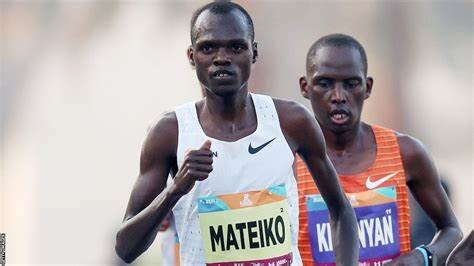
And in the women’s category, the Valencia Half Marathon (which has the two fastest times in history) will focus on Kenyan runner Agnes Jebet Ngetich, who will make her debut over the distance in Valencia, the city where last January she broke the world record in the 10K Valencia Ibercaja by Kiprun (28:46, also setting the world record for 5K with her 14:13). Ethiopia’s Tsigie Gebreselama and Kenya’s Lilian Kasait Rengeruk and Catherine Amanang’ole will be her main rivals vying for victory.
Marc Roig, coach of the event’s international elite athletes, assessed this list as “the best half marathon this year, with high level duels that aim, once again, to achieve 57-minute performances by several athletes. And a clear challenge to the stopwatch in the women’s race. Never before has a debutant taken to the start line who has run a 10K in under 29 minutes. We are really looking forward to seeing how fast the race will be on October 27th”.
(09/09/24) Views: 94
AIMS
'Taking my spikes off for the final time' – American sprinter Morolake Akinosun announces retirement at 30
Olympic gold medalist Morolake Akinosun announces her retirement at 30 after an illustrious career in track and field.
American sprinter Morolake Akinosun has announced her retirement from professional track and field at the age of 30.
The 2016 Olympic gold medalist and World Champion in the 4x100 meter relay bids farewell to a sport in which she has thrived for over a decade, leaving behind a legacy filled with victories, resilience, and a clear sense of purpose for her next chapter in life.
Akinosun, who earned international acclaim as part of Team USA's winning relay squad in the Rio 2016 Olympics, took to social media to confirm the news.
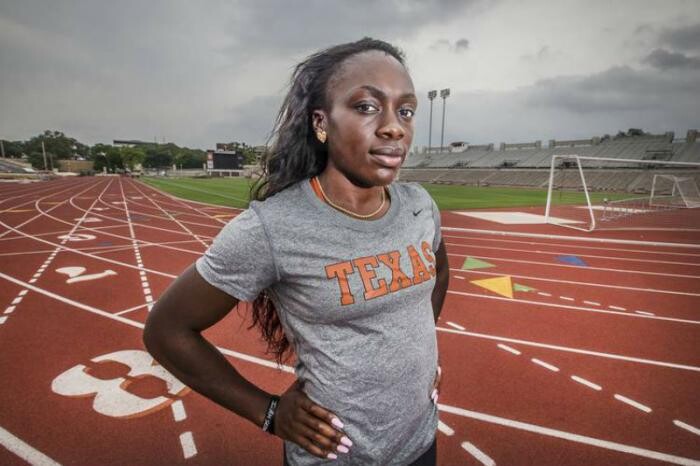
Akinosun, who earned international acclaim as part of Team USA's winning relay squad in the Rio 2016 Olympics, took to social media to confirm the news.
In a candid reflection on her career and her decision to retire, Akinosun shared that she felt a deep sense of peace about her decision following the 2024 Olympic Trials.
"Following the 2024 Olympic Trials, I had an overwhelming feeling and sensation immediately after that I was done. It felt so clear to me," she said as quoted by Citius Mag.
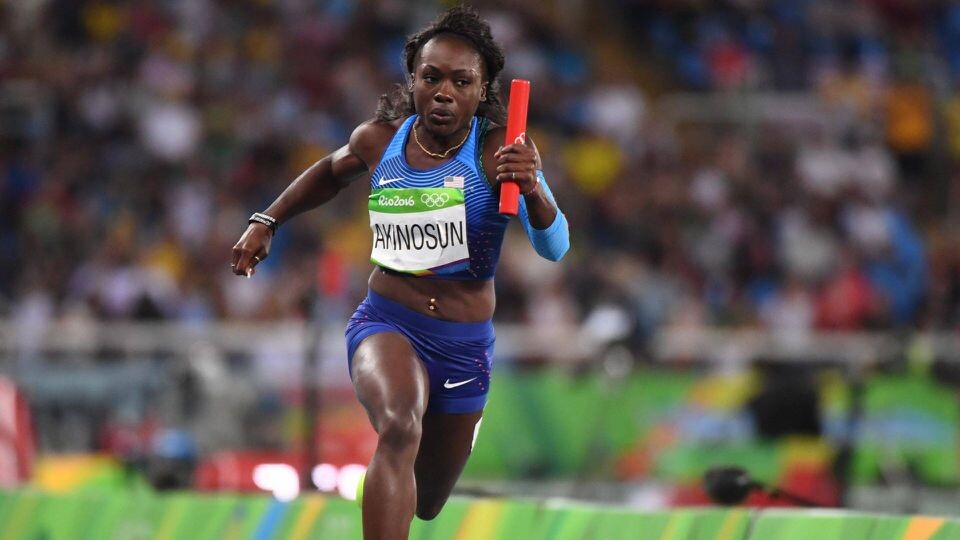
The Nigerian-born sprinter revealed that she prayed for clarity and soon found herself on a new path, meeting influential figures like Michael Johnson and Steve Gera.
Just a month later, she was headed to Paris to work as a consultant with Grand Slam Track and soon after joined the company full-time.
Akinosun’s track journey began with success at a young age, clinching gold medals in the 100 meters and 200 meters events at the 2011 AAU Junior Olympics.
She then ascended to the national stage as the 2013 USA Junior Champion in the 100 meters and silver medalist in the 200 meters.
Her collegiate career was equally groundbreaking, as she became only the second woman in history to score in four events at the NCAA Outdoor Championships in consecutive seasons.
Akinosun's true breakout on the global stage came when she won gold at the 2015 Pan-American Games in Toronto, setting the stage for her Olympic glory in 2016 and her World Championship triumphs.
She was part of the victorious 4x100m relay team at the 2017 World Championships in London and added a bronze medal from the 2019 World Championships in Doha to her extensive medal haul.
Despite her incredible success, Akinosun recognized early on the need to plan for life after track.
Outside of her athletic career she has already made a mark in the world of media and event management.
“I don’t know if anyone ever knows exactly what they want to do when they’re done,” Akinosun admitted.
“But I did start dabbling in other things to figure out what life could possibly look like for me post-track and field.”
(09/11/24) Views: 93Festus Chuma
If Running Uphill Feels Like Torture, Make These Expert-Approved Adjustments
Try these expert-approved tips to make running uphill easier and more enjoyable.
I love to run—but I detest running uphill. When I hit an incline, my legs burn, I get acid reflux, and I often need to take a break to catch my breath. Jogging over hills is so terrible for me that I exclusively map out flat routes and sign up for races with minimal elevation, if any.
As it turns out, there’s a legitimate reason people struggle with hills. Every single one of us has a unique running style, or running fingerprint, as John Mercer, a professor of Kinesiology and Nutrition Sciences at the University of Nevada, Las Vegas, calls it.
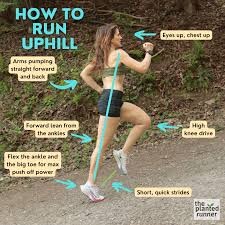
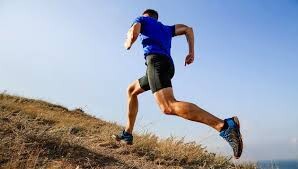
I, for example, have a long, lanky strut while my husband hops up and down like a kangaroo. When you run uphill, your entire running style changes. Maybe you hunch over or flail your arms or stick your butt out. As a result, you engage different muscles that may not be in tip-top shape, such as your hip flexors, hamstrings, and the muscles that support your knee joints.
This, coupled with the fact that you’re now working against more gravity, is why hills can be so brutal. “Instead of just needing to propel yourself horizontally, you’re also essentially climbing a flight of stairs. So, yeah, it is hard,” says Milica McDowell, a certified exercise physiologist and vice president of operations at Gait Happens.
But hills don’t have to be agonizing. There’s a method to the madness of hill running, and if you go about it correctly, you might end up enjoying it.
According to McDowell, when you jog up a hill, make sure to strike the ground with the middle or ball of your foot, not your heel. A heel-first approach causes you to lean back, she says, which throws off your center of gravity and acts as a breaking mechanism.
This slows you down, making it tougher to get anywhere because you’re breaking every step, McDowell says. Landing on your mid-foot shifts your center of gravity forward, which propels you up and over the mound. “You want to feel like you’re falling up the hill,” she says.
When I’m on a steep section of a trail, I tend to collapse over my torso to suck in more air, but according to Mercer, this move makes the body work even harder. This is proof that gravity is at play. It can feel like you’re carrying an extra four pounds on a slight incline, Mercer says. But a super steep hill? That can feel like an added ten to 20 pounds of extra weight pulling you down.
The key is to lean forward, but not so much that you’re crunching over your stomach. Look ahead, not down at the ground, and keep your shoulders in front of your hips, Mercer says. Lift your ribcage up and out of your pelvis and engage your core by pulling your belly button back to your spine. This will fix your posture, pull back your center of gravity, and make it less torturous to get up the hill, McDowell says.
Uphill running puts more demands on your joints and muscles, per a 2023 research study, so it might feel like your workout suddenly gets more intense when you reach an incline. One trick is to slow down—assuming you’re not in a timed race.
If you try to stick to your normal pace, the metabolic effort needed to climb the hill will dramatically increase. If you often feel winded when you inch over hills, try walking instead. Mercer says this can help you avoid burning out, so you don’t have to bring your entire workout to a screeching halt to recoup for a few minutes. Don’t be fooled—taking it down a notch when going uphill does not mean you’re getting less of a workout. Because trekking up a hill automatically intensifies the activity, your energy output, even if you’re going slower, is more or less the same as it would be running on a flat path.
At the same time, you should pick up your cadence. Trade in the longer steps for shorter, quicker strides. McDowell recommends upping your step cadence by up to 25 percent. So, if you were taking roughly 100 steps a minute, shoot for 125. But keep this in mind: you’re taking more steps, but you want each step to be shorter and cover less distance, so you’re not full-on sprinting uphill. “It’s the turnover rate of your feet that’s faster, not your whole body speed,” she says.
Taking small, swift steps means your feet spend less time on the ground—which decreases impact forces on your knees, hips, and ankles—and helps you run more efficiently, McDowell says.
Anything you can do to propel your body forward will help you get over the hill, which is why McDowell puts her arms to work. She recommends swinging your arms faster and farther out to take some pressure off of your legs.
“Your arms create momentum, and that momentum is part of the gas pedal that pushes you up the hill,” she says. If you can, swing them 25 percent faster than when you’re going downhill or on a flatter path. “It makes a huge difference,” McDowell says.
When you work out, you suck in oxygen, which provides energy to your muscles. The harder you run—à la trotting up a killer mountain—the more oxygen your body needs. “Your body is like, ‘I need more blood in these muscles, I need more oxygen in these tissues’” McDowell says. But you probably aren’t getting the oxygen you need if you’re short of breath.
The fix? Slow down your breathing. McDowell uses a 2:2 breathing pattern where you inhale for a count of two (or about the time it takes you to take two separate foot strikes), then exhale for two. “That’s going to drive down your breathing rate, which will decrease your heart rate, which helps lower stress,” McDowell says, all while increasing the amount of oxygen in your body.
I always get a bad attitude when I see a hill. I think, “This is going to suck,” and then guess what: it does. So, Mercer says that the best thing you can do is have the right mindset.
Research shows that a positive outlook can improve your performance and help you accomplish your fitness goals (including that daunting hill ahead).
According to a study published in 2019, when Olympic and Paralympic athletes were asked, “To what do you attribute your success?” they didn’t reference how toned their legs were or how they built up their glute muscles. They mentioned their positive mindset—how resilient and hungry they were for the competition. Their advice for other athletes? Believe in yourself and embrace the challenge.
Getting over a hill is a mental game. Accept that your pace will change or that the next 10 minutes might be extra tough. But that’s okay—you’ll get through it.
(09/07/24) Views: 90Outside Online
Runners: how to fix your tummy troubles
Have you ever been mid-run, feeling in the flow and bouncing along happily, when suddenly you feel stomach pain and an urgent need for the nearest bathroom? You’re not alone. Exercise-induced gastrointestinal (GI) distress (sometimes referred to as “runner’s tummy”), which may cause cramping, diarrhea and/or nausea, is a common digestive issue experienced by athletes of all ages and abilities, and can significantly impact your ability to perform at your best.
The good news is that, by understanding the reasons behind your struggles and taking simple steps, you can get control of GI issues, keep your digestive tract happy and finish that run without needing a bathroom stop.
Why does it happen?
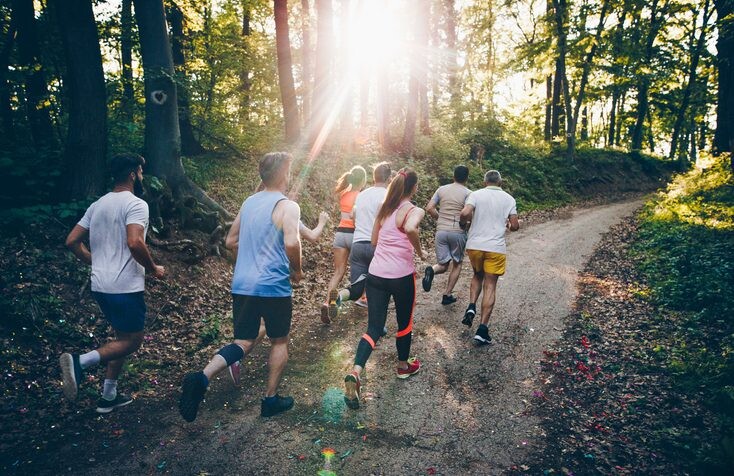
One study found that exercise-induced GI distress was prevalent in 30 to 90 per cent of younger people who ran long distances. The reasons for it vary among individuals (and even among your runs), but here are some common causes:
The impact of high-intensity running can physically jostle the stomach, leading to lower-GI distress, such as diarrhea and bloating.

As you exercise, the gastrointestinal tract changes the way it absorbs and regulates water and electrolytes, especially in hot weather. This means it can prioritize maintaining hydration, which is key, but possibly at the expense of digestion.
Gut hormones that influence digestion, such as leptin and ghrelin, are released in response to exercise. These changes are important for energy availability and performance, but can lead to GI distress.
During exercise, the muscles used to run receive more of the blood supply to meet their higher nutrient and oxygen demands, leaving the gastrointestinal tract with less blood flow. This reduction can lead to delayed gastric emptying, which is the process that moves food into the small intestine from the stomach.
Dehydration can increase the risk of, or worsen, existing symptoms (such as nausea and diarrhea).
Exercise can weaken the lower esophageal sphincter, which prevents acid reflux, possibly leading to heartburn during exercise.
How can I prevent it?
You may need to try different approaches if you regularly experience GI distress on a run.
One strategy is to plan your meals around your runs, to ensure appropriate fuelling. Eating foods that are high in fibre, fat, sugar alcohols or protein right before your run can increase the risk of GI distress, because they take longer to digest. Also, consuming too much sugar in one go, such as a concentrated gel with a sports drink, without prior gut training, can be overwhelming for your digestive system and draw too much water into the gut, leading to diarrhea. (It is best to take gels with water.)
Underfuelling may also be a risk factor. Failing to meet your overall daily energy needs may affect GI transit time, which can lead to digestive issues. So instead of skipping the pre-run snack because you think it is causing the symptoms, you might want to think about increasing your overall energy intake to resolve your tummy issues.
Practise gut training
Just as you would slowly build up mileage, you want to slowly train your gut to handle fuel before and during running. Practise eating snacks before and during your workout, and gradually build it up to your goal level. For example, start with half a banana and slowly increase to the point where you may be able to manage a whole banana on an English muffin with honey (which could be up to 60g of carbohydrates).
Some great snacks to try pre-run:
Graham crackers
Applesauce
Gels or chews
Banana
Dates
Dry cereal
Granola bar
English muffin or toast with jelly
Gummy candy
Lauren Charlton is a competitive distance runner and future sports dietitian who’s passionate about keeping runners in the sport for the long game.
(09/07/24) Views: 90Lauren Charlton
Vitaliy Shafar wins Jungfrau Marathon
4000 runners start at the Jungfrau Marathon. The winner crossed the finish line after just over three hours.
Vitaliy Shafar mastered the 42.195 kilometers and 1953 meters of altitude the fastest and took victory at the Jungfrau Marathon 2024. The Ukrainian mastered the route from Interlaken to Kleine Scheidegg in 3.04.10 - the last meters on what is probably the steepest red carpet in the world and to great applause.

Third and thus the best Swiss was Dominic Rolle. In the women's race, the victory went to Susanna Saapunki. The Finn is not only a good skier, she has also already scored World Cup points in cross-country skiing.
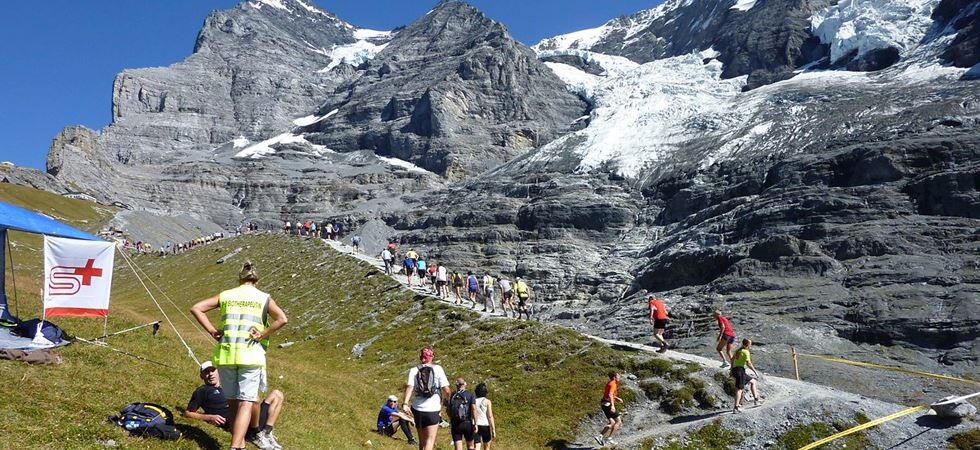
"The Swiss government wishes you all the best, enjoy the run in this wonderful weather," said Federal Councillor Albert Rösti into the microphone before he gave the go-ahead with a shot. The participants stood in individual sections: the elite at the front of the start gate and those who will probably reach the finish at 2320 meters the latest, further back on the Höheweg.
None of them are completely alone on the road: 1500 helpers are on duty, 160 medical professionals, there are 22 first aid stations and 22 defibrillators. Food is available at 22 stations. On the way, they occasionally see relatives who make clever use of the Jungfrau Railways railway system. And the population of the transit communities gives courage with applause.
(09/07/24) Views: 89Samuel Günter







